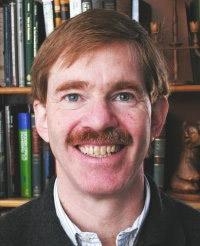Abstract: Ultracold refers to matter whose effective temperature is so low that its motion must be described in terms of quantum-mechanics rather than thermodynamics, the latter being adequate for the description of cold matter even when the temperatures are indeed extremely low. The Bose-Einstein Condensate (BEC) is perhaps the most familiar among many forms of ultracold matter. Ultracold atoms are as pristine and as deterministic as the laws of nature allow. There is a reasonable though debatable supposition that if cold atoms are good for systems such as clocks and inertial sensors, ultracold atoms ought to be even better, especially if one can compensate for the loss in atom flux that seems inevitable when transitioning from the cold to the ultracold regime. A compelling argument in favor of the ultracold is based on long coherence times, which can translate to long interrogation times, which translates to high signal-to-noise ratio if done properly. Yet another apparent aspect of atoms in the ultracold regime is that they interact. This is very interesting. It is interesting because it leads to the notion of an atomtronic dual to electronic devices and circuits, in which electric potential and current are exchanged for chemical potential and atom flux. Long quantum mechanical coherence times, combined with atom interactions thus enables the possibility of atomtronic circuits for quantum signal processing that parallel electronic circuits designed to carry out classical signal processing. In this presentation I intend to place the parallel between electronics and atomtronics on firm footing. Resistance, capacitance and inductance all have perfect atom analogs; I will also describe the principles of the atomtronic transistor. From there, those familiar with electronic circuits might feel quite at home with atomtronic circuit diagrams... almost: One of the most subtle components in this, the quantum domain, is the battery, i.e., the power supply that powers a circuit. With the introduction of the circuit components I come full circle to describe the atomtronic oscillator and its utility in atom based sensing.
Our experimental work on sensors and the development of atomtronics is based on atom chip technology. Compound glass and silicon substrates enable control and manipulation of atoms both magnetically and optically. The chip approach enables small size and an ability to spatially structure the chip to obtain complex functionality. I’ll will provide an overview of our efforts towards small scale systems, as well as recent progress toward the demonstration of atomtronic transistors.
Biography: Dana Z. Anderson is a Professor of physics at the University of Colorado and a Fellow of the JILA Institute. He also serves as the Director of the Optical Science and Engineering Program at CU-Boulder. He received a B.S.E.E. from Cornell University in 1975 and a Ph.D. in physics from the University of Arizona in 1981. He spent three years as a Research Associate at the California Institute of Technology working on a prototype gravitational wave optical interferometer. Upon coming to the University of Colorado, he worked extensively on laser gyroscopes and served as a consultant to Litton Guidance and Control Systems and Rockwell, International. Also at the University of Colorado he developed a new class of optical techniques for information processing based on dynamic holography. His current work centers on the development of integrated atom optics and practical applications of ultracold
matter.


